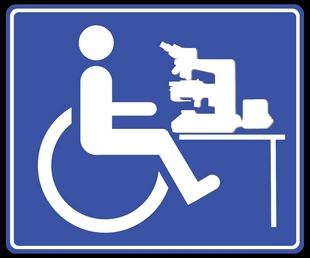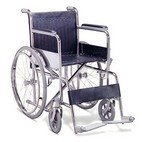Sunday 1 January 2012
The Same In Spite Of Change
Pain; When the inflammation receded in early January of 2007, movement in my legs began to return but along with it, the pain generated by damaged nerves. I found that no drug relieves this neurogenic pain as most analgesics (pain killers) block the transmission of pain generated in the pain sensors to the nerves and ultimately the spinal cord (an oversimplified explanation). The spinal cord itself generates this pain and all drugs available have little or no effect on my level of pain (Gabapentin, Lyrica, Nortryptiline, Amytriptyline). Nortryptiline may exhibit very minor relief. As such, I've taken myself off Gabapentin and found no increase in my level of pain. Why take medication if it does nothing?
I have to wonder how my pain compares to others with similar spinal cord injuries. As my injury was from infection I have to wonder how damage cause by bacterial enzymes & toxins compares to that caused by traumatic (crushing or severing) injury. That is, how does my pain generated by intact but damaged nerves compare to someone whose nerves are actually severed. Do neuro-pathways that are damaged still conduct more pain than nerves that are cut and not connected. Is my pain more, less or the same regardless of method of injury? Can such magnitude of pain even be measured?
Regardless, while movement continues to improve to some degree, the pain which began to be felt almost 5 years ago to the day has neither increased or decreased.
Movement; Having been told on leaving the hospital 5 years ago that I would never walk again, I arrived home paralyzed from the chest downwards. Since that time, movement has slowly but steadily returned to the point where I can wiggle some toes on both feet to some degree. Plantarflection (standing on my tip-toes) is not an effort at all. Dorsiflection, (lifting my foot off the ground with my heels on the floor) was slow to return. I was lead to believe that this was a neurological problem but with increased walking and stretching, I feel it has more to do with the tendons and ligaments having shortened with disuse. Like trying to rejuvenate dried up & cracked weathered leather, it is very hard to stretch out and restore the supple nature of tendons. I can stretch out for an hour but in the next hour they tighten again. It is sort of a 'catch 22" situation where I would have to be walking constantly have them stretch out properly but as they aren't stretched out, I can't walk constantly. Perhaps the dreaded 'Tone' plays a role here as well.
So after 5 years post prognosis, I can stand in place upright unassisted but there is an unsteadiness that is difficult to overcome. As if all muscles don't work in concert and hold the body perfectly taut. Being upright and walking more would help this but again, the 'catch 22".
I can walk some distances with the aid of a walker and walk between the parallel bars with almost a normal gait as long as I hold on. Close, but not there yet. The next challenge is to be able to stand one one foot. Right now I can't correct those small wavering movements to hold my self taut and upright. On one foot I start leaning in one direction or another and can't correct fast enough to regain my upright position. If I can continue to improve the dorsiflection, I'm hoping that I can take steps without any major orthotic apparatus. Trying to walk too fast, I find my toe will catch the floor/carpet and I may trip myself.
So, I can stand unassisted and walk some distances assisted and things are still changing.
People talk about "muscle memory" where your body (muscles) remember what they are suppose to do after a period of disuse. I've not found that. I've found that muscles have to come back in their own sequence and at their own schedule. I have repeatedly stood and toppled over onto my chair or bed until one time I tighten or engage some muscle and find myself saying "oh, that's how its done". No "muscle memory" - I have to relearn and tell them what to do. It is interesting to notice the sequence of how the muscles come back and what they do. Things that able bodied people do not notice or take for-granted. It reminds me of the American Stealth B-1 Bomber which flies by computer where the software makes thousands of corrections to the flight surfaces every second, allowing it to fly. Standing upright, thousands of tiny muscle fibers fire as necessary in an ever changing sequence to keep on upright. This complex orchestration goes unnoticed by the healthy individual.
Tone; That muscular tightness not due to lack of exercise but rather some signal from the injured spinal cord (or brain) still plagues me. It has diminished somewhat over the years but is present. How much that remains is 'Tone' and home much is still due to muscles not fully returned to pre-injury state is yet to be determined. Walking upright involved the back muscles to a great degree and I find they fatigue the quickest when upright. However, the more I force myself to stand upright I find improvement follows. I stand upright at work and file papers which forces me to twist and turn on the spot. I do this until the muscles begin to burn and the body begins to shake with fatigue. Slowly, it becomes a bit easier with each passing week. I find it amazing that 6 months of complete inactivity in a hospital bed can cause the muscles and tendons to shorten so much that it takes 6 years to return them somewhat to their pre-injury state.
Spasms; These still show up but fluctuate. Most often at night when I try to relax after a workday, The left hip or the right leg will start off slowly, twitching, then jumping - sometimes for minutes and sometimes for hours. Very, very annoying,
Sciatic Nerve Pain; Still bothers me but with perhaps more good days than in previous years. I am convinced that this was not really the result of my neurological injury but rather that I lay in a hospital bed for so long in one position where lying towards one side was favored. I believe it is more a function of the muscles that are located in the lower back and pelvis that control the action at the hip, have become disproportionally shortened and therefore pull the hip out of alignment with resulting pain. Continued exercise may eventually reduce this to tolerable levels.
The bottom line is that I experience constant severe pain on my bad days and extreme discomfort on my good days. This is during all my waking hours (I don't feel pain while asleep) for the last five years and most likely for the rest of my life. Having your mind drawn away from your daily tasks every few minutes is really is no way to live.
Work; I have been back at my workplace now for over two years without any major problems. They have been accommodating however I need very little special consideration. I can stand without any problem (I just can't step away from my chair). I can reach down unassisted and pick a sheet of paper off the floor without major effort. I can operate instruments with foot switches with no problem. There is very little that I can't do however it remains a very big nuisance to be attached to and dependant upon this wheelchair.
Future; I'm not certain if further physiotherapy would be of any help. I've wondered if a chiropractor could help with my sciatic pain. I've checked into local pools with disability access however have yet to take advantage of any. I'm sure that this could help with movement as well as burning off calories and weight gained from just sitting.
Wheelchair; My electric wheechair had gone through many repairs over the last 5 years and it, like me, may be on it's last legs. I fear that I have regained too much mobility to qualify for monetary assistance in acquiring a new chair. The one I currently have cost $18,000 of which 3/4 was subsidized by the government. If I don't qualify, the entire cost would be mine alone to bear. I'm not sure if I could afford that amount, yet I need a motorized wheelchair to do my job. (one hand on the joystick to drive, and one to carry items). I could not do my job with a manual chair. Nor would one of those 'Hover-round' motorized scooters work as the ones I've seen have a steering column out front and can't be parked under a desk.
So, do I spend big $$ to continue working or will I be forced to quit, retire early, go on disability when the service company can no longer repair this old buggy?
You'd think that the government would be happier to see me as a productive citizen paying taxes rather than sitting at home draining disability from others that may truly need that assistance. But then again we're talking government and logic often eludes them. We shall see...
Summary; What I've come to realize that with my injury, the paralysis is the most insignificant problem that I can work on and overcome. It is all the rest that tags along with this injury that destroys one - the constant extreme pain, the tightness and the spasms.
Techno-Zombies
Then there are the human obstacles who like hair & grease in a plugged drain block the free movement of people who actually have a purpose and destination. Wheeling down some hallway I frequently have to stop and wait while others, oblivious to my presence, refuse to share the space. Then there are the others, again so self absorbed, that they watch me wheel up, give me a momentary glance, and resume their conversation. Does my presence not register in that pea-brain of theirs or do they just not care? When my path is otherwise blocked, do I really have to roll up to one inch of your knees and shout excuse me to be noticed? My presence is an annoyance. I've heard it said that if you are in a wheelchair, you fly under society's radar and go unnoticed. You become a non-person.
Some of the human flotsam & jetsam that impedes the orderly flow of traffic are include, but are not restricted to those below;
- The Weaver (aka Zig-Zagger) - doesn't pick a side of the hallway but drifts from left to right and back again repeatedly.
- The Obstacle - stops dead in the middle of the hallway to check their hand-held for messages. Like a rock in a river, other traffic must flow around both sides.
- The Orangutan - walks down the hallway with arms swinging out from their sides threatening to slap anyone who attempts to pass. A variation of this adds shoulder bags, purses, shopping bags, etc to the arsenal attempting to bombard the passerby.
- The Coffee Clutch - like a log jam in a river, may start small with one or two people engaged in a hallway meeting, but often grows as more people get snagged and join into what eventually becomes a full fledged hallway seminar.
- The Ping-Pong Ball - walking full speed down the hallway, suddenly realizes they've forgotten something from where they came and instantly change direction back, usually running into whomever is immediately behind them. The true ping-ponger may remember, then decide it isn't important, then reconsider, then change their mind again, seemingly bouncing back and forth in a three foot span of space in the middle of the hall.
- The Darter - Darts out of side doorways without looking to see if the hallway is clear. Storm out of a doorway looking only in the direction of their travel while others have to stop short to avoid rear-ending each other.
- The Racer - Doing the lap around a corner these folks cut the corner sharply (right side of hallway to left side of new hall) to avoid a few extra steps and save a few microseconds. The racer often bumps head-on the the person rounding the corner in the opposite direction.
- The Salmon - like the fish that swims upstream to reproduce, these folks resist the flow of current in one direction and try to maneuver upstream through that flow dividing oncoming traffic.
- Deer In The Headlights - confront them head on and they just stand there with a blank "deer in the headlights" look in their eyes. Hello! I said excuse me - I can't dematerialize and roll through you. Why do you think I've stopped here inches from your knees?
- The Brit - (no disrespect to my British friends) - The unwritten convention is to walk on the same side of the hallway as the side of the road you drive on. Here in North America that being the right side. This prevents people from meeting head-on and having to do the Tango or 'play chicken' as they decide if or who will move and to which side.
- The Line Dancers - Side by side, two, three, more...hold hands or have arms entwined as they sweep down the hallway refusing to break for anyone.
- The Lousy Shepherd - Unconcerned parent with kids that stray in every which direction with no discipline or control. Like trying to herd cats! Control your offspring or leave them at home.
- Darwin's Legacy - the most dangerous, often to themselves. Walking, texting, i-pod blasting through earphones, disengaged, lost in thought and oblivious to all dangers around them. These are the clowns that run into you and crumple into your lap, that in their oblivion walk into traffic, & fall down staircases.
There are numerous other variations as you can imagine...
There is also the opposite, the over considerate person who immediately decides that because you are in a wheelchair that they must do everything in their power to help you, even if you politely decline their assistance. Thank you, its my feet that don't work well, you don't have to exit and then re-enter the elevator to push my floor button for me. It's my feet, not my ears - you don't have to speak louder because I'm in a wheelchair. I try not to discourage these people, politely declining assistance I don't require but accepting what they insist on offering. Perhaps the next wheelchair bound person will need such help.
Offer assistance if you see me struggling, otherwise assume I'm doing fine - and Thanks anyways.
People, please be aware of your surroundings for the benefit of others and for your own safety. Civilization means we are civilized and should act in a civil manner towards each other. Offer common courtesy to all you encounter and you will probably receive respect in return. Most of all, just Think!
Thank you for your attention!







.jpg)


